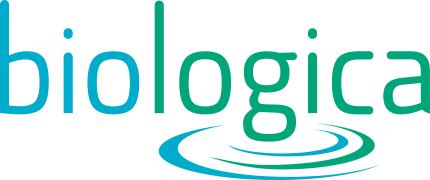Photosynthetic organisms meet all of their metabolic needs using light energy and are therefore “autotrophic”. Photosynthetic aquatic organisms (commonly referred to as “algae”) form the base of aquatic food chains and many nutrients vital to the development and survival of higher-level organisms (fish, whales) are only synthesized by algal primary producers.
Several distinct habitats within aquatic ecosystems can support growth by photosynthetic organisms (bottom substrate, open water column, water surface) so long as there is light penetration and other physiochemical criteria are met. The different niches within aquatic environments suitable for growth of photosynthetic organisms contain different types of organisms, generally the phytoplankton, periphyton, and macroalgae.
Phytoplankton
“Phyto”: Photosynthetic, converting light into energy
“Plankton”: Organisms that live suspended in the water column either because they are non-motile or too small or weak to swim against currents.
Phytoplankton are unicellular organisms (although they can occur in colonial forms) that live suspended in the water column, and are typically consumed by zooplankton. Phytoplankton blooms are commonly referred to as “algae blooms” or “red tides”, which occur naturally, according to predictable succession patterns associated with changes in ambient temperature and light regime.

Periphyton
Peri (around, or enclosing) phyton (photosynthetic, converting light into energy).
Periphyton (also known as benthic microalgae or phytobenthos), refers to the encrusting algae found covering bottom substrates in marine and freshwater systems. Periphyton are especially important primary producers in shallow freshwater systems with large littoral zones. Although periphyton are studied less frequently than phytoplankton, they are important sources of nutrients for macroinvertebrate grazers and fish communities.
Studies of microalgal communities can be utilized as part of overall monitoring of ongoing aquatic community health, as well as to monitor changes in response to industrial activity, or to ensure water is safe for public use.
Phytoplankton samples are generally collected as water samples from discrete depths or as depth-integrated samples, using surface grabs or devices such as Niskin bottles. Periphyton samples are scraped from the bottom and are often collected with specialized suction/scraping devices by SCUBA divers.
Individual microalgal organisms are typically no more than a few microns in diameter, so all samples must be carefully observed under microscope magnification.


